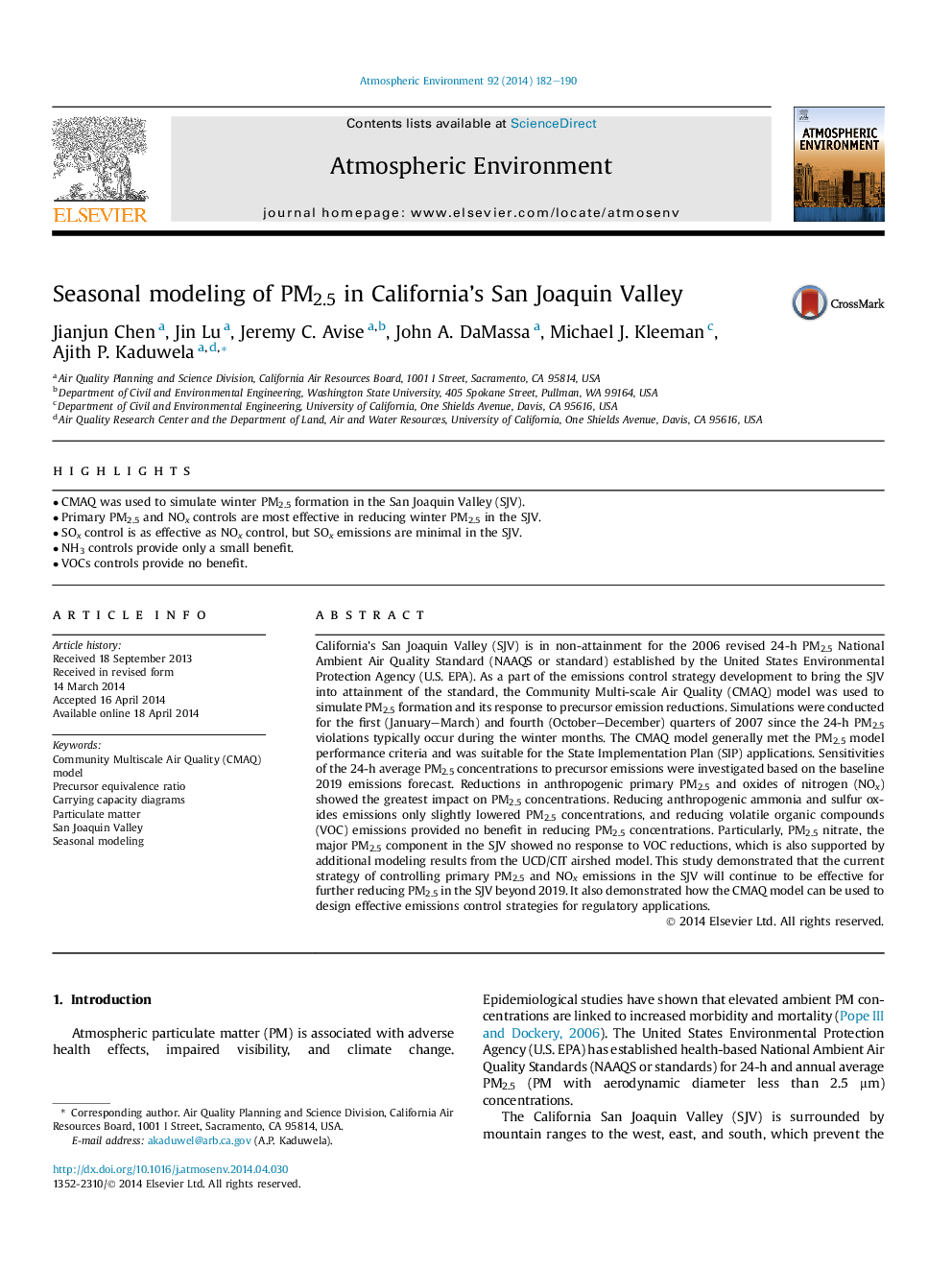| Article ID | Journal | Published Year | Pages | File Type |
|---|---|---|---|---|
| 6339349 | Atmospheric Environment | 2014 | 9 Pages |
Abstract
California's San Joaquin Valley (SJV) is in non-attainment for the 2006 revised 24-h PM2.5 National Ambient Air Quality Standard (NAAQS or standard) established by the United States Environmental Protection Agency (U.S. EPA). As a part of the emissions control strategy development to bring the SJV into attainment of the standard, the Community Multi-scale Air Quality (CMAQ) model was used to simulate PM2.5 formation and its response to precursor emission reductions. Simulations were conducted for the first (January-March) and fourth (October-December) quarters of 2007 since the 24-h PM2.5 violations typically occur during the winter months. The CMAQ model generally met the PM2.5 model performance criteria and was suitable for the State Implementation Plan (SIP) applications. Sensitivities of the 24-h average PM2.5 concentrations to precursor emissions were investigated based on the baseline 2019 emissions forecast. Reductions in anthropogenic primary PM2.5 and oxides of nitrogen (NOx) showed the greatest impact on PM2.5 concentrations. Reducing anthropogenic ammonia and sulfur oxides emissions only slightly lowered PM2.5 concentrations, and reducing volatile organic compounds (VOC) emissions provided no benefit in reducing PM2.5 concentrations. Particularly, PM2.5 nitrate, the major PM2.5 component in the SJV showed no response to VOC reductions, which is also supported by additional modeling results from the UCD/CIT airshed model. This study demonstrated that the current strategy of controlling primary PM2.5 and NOx emissions in the SJV will continue to be effective for further reducing PM2.5 in the SJV beyond 2019. It also demonstrated how the CMAQ model can be used to design effective emissions control strategies for regulatory applications.
Related Topics
Physical Sciences and Engineering
Earth and Planetary Sciences
Atmospheric Science
Authors
Jianjun Chen, Jin Lu, Jeremy C. Avise, John A. DaMassa, Michael J. Kleeman, Ajith P. Kaduwela,
